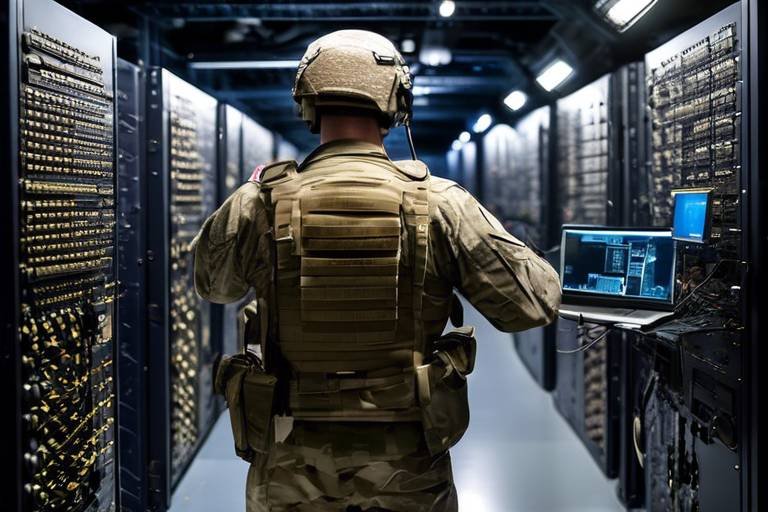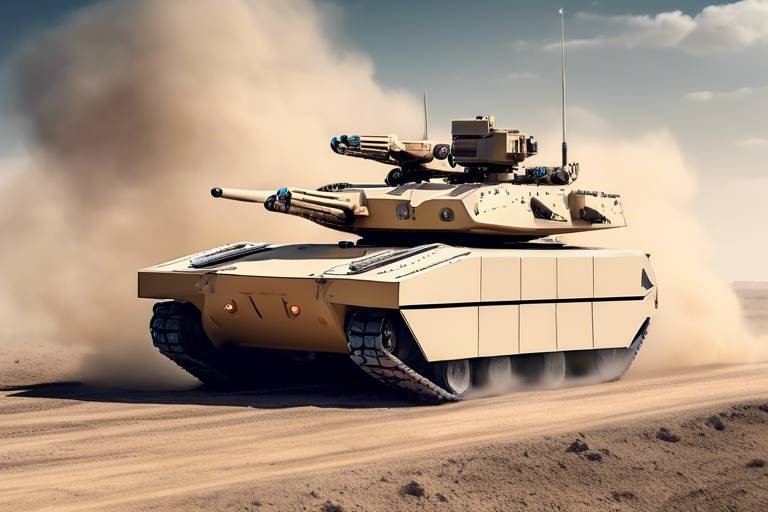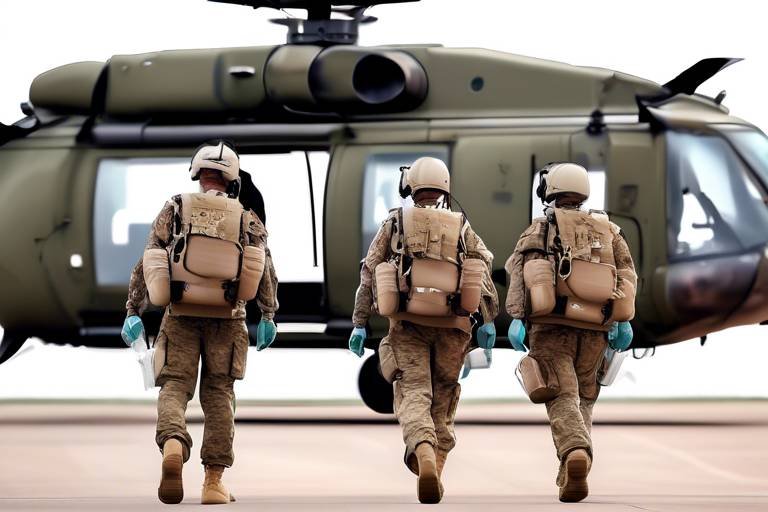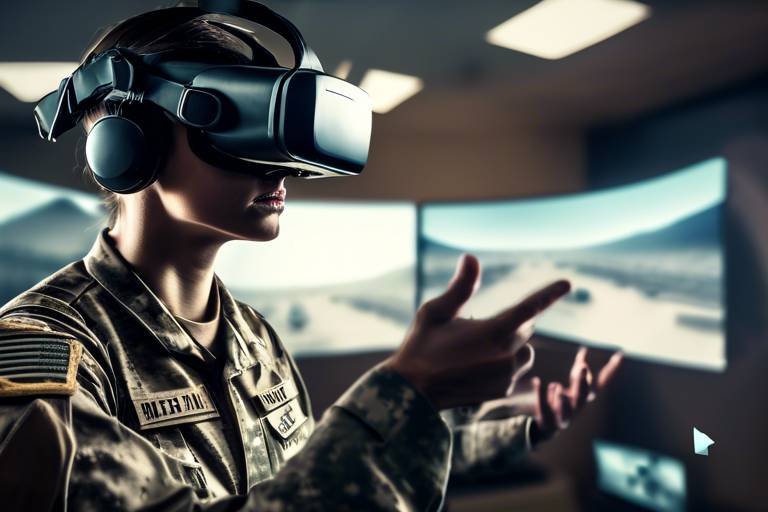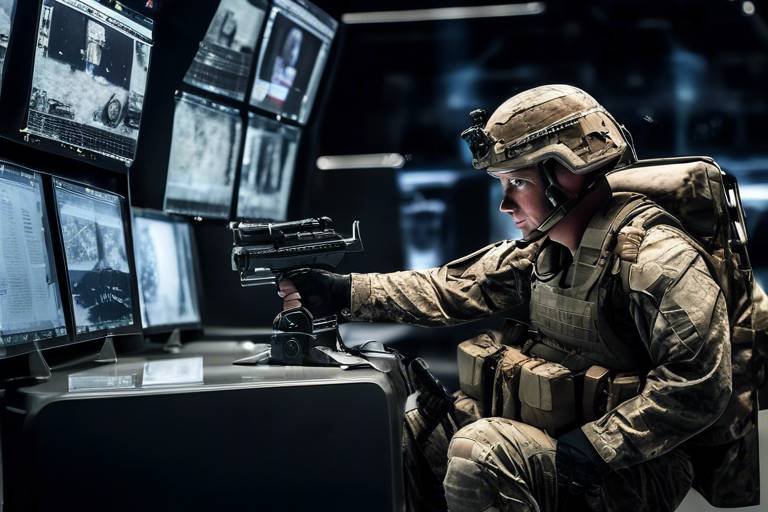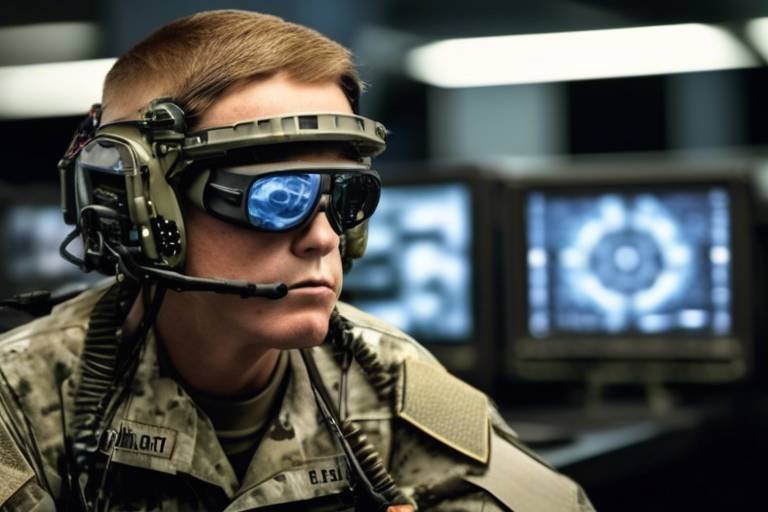Future Challenges in Military Technology Implementation
The landscape of military technology is evolving at an unprecedented pace, and with it comes a myriad of **challenges** that defense organizations must navigate. As nations strive to adopt cutting-edge technologies, the implications for strategy, ethics, and operational effectiveness become increasingly complex. Imagine a world where drones autonomously carry out missions or where AI systems make critical battlefield decisions; while these advancements hold promise, they also raise significant questions and hurdles. In this article, we will explore the anticipated obstacles in implementing advanced military technologies, focusing on their multifaceted implications.
Integrating new technologies into existing military frameworks presents significant challenges, including compatibility issues and the need for extensive training to ensure personnel can effectively utilize these advancements. Picture a military unit trying to operate a state-of-the-art drone while still relying on outdated communication systems; the potential for miscommunication and operational failure is high. Moreover, the **training** required to bring personnel up to speed with new technologies can be both time-consuming and costly. This creates a pressing need for a robust strategy that encompasses not only the acquisition of new tech but also the systematic training of soldiers to ensure seamless integration.
As military technology evolves, so do the **cybersecurity threats** that accompany it. Protecting sensitive information and systems from cyberattacks is crucial for maintaining operational integrity and national security. Just as a castle needs strong walls to fend off invaders, military organizations require fortified cybersecurity measures to safeguard their digital assets. The stakes are incredibly high; a successful cyberattack could compromise mission-critical data, leading to catastrophic consequences on the battlefield. Therefore, investing in advanced cybersecurity technologies and protocols is not just an option; it’s a necessity.
The rapid advancement of military technology raises **ethical questions** regarding autonomous weapons and decision-making processes. Should machines be entrusted with life-and-death decisions? This dilemma is akin to giving a child the keys to a sports car; without proper guidance, the potential for disaster is immense. Addressing these concerns is vital for responsible implementation and adherence to international laws. Moreover, as military forces explore the use of AI in combat, they must consider the implications of these technologies on civilian populations, ensuring that ethical standards are upheld.
Funding for military technology development is often limited by **budget constraints**. Balancing the need for innovation with fiscal responsibility is a persistent challenge for defense organizations worldwide. Imagine trying to build a state-of-the-art vehicle with a budget that barely covers a basic model; the frustration is palpable. This reality forces military planners to prioritize certain technologies over others, often delaying advancements that could significantly enhance operational capabilities. A strategic approach to budgeting, focusing on long-term investments in technology, is essential for overcoming this hurdle.
The complexity of modern supply chains can expose military technology projects to **vulnerabilities**. Ensuring resilience and reliability in procurement processes is essential for successful implementation. Think of a military operation as a complex machine; if one cog fails, the entire system can grind to a halt. Disruptions in the supply chain can lead to delays in deploying critical technologies, impacting mission readiness. Therefore, building a robust supply chain that can withstand various disruptions is paramount for military effectiveness.
Achieving **interoperability** among different military branches and allied forces is crucial for effective collaboration. This challenge requires standardization and cooperation in technology development and usage. Imagine trying to communicate with a friend who speaks a different language; without a common tongue, the message can easily get lost. Similarly, if different military units use incompatible technologies, coordination during joint operations can become a logistical nightmare. Establishing common standards and protocols is essential to ensure that all forces can work together seamlessly.
Effective implementation of new technologies necessitates comprehensive **training programs**. Adapting military personnel to rapidly changing technological landscapes is essential for maximizing operational efficiency. It’s like teaching an old dog new tricks; without proper training, even the most advanced technology can become useless. Regular training sessions, simulations, and hands-on experiences are vital to prepare military personnel for the challenges they will face in the field. This investment in human capital is crucial for leveraging the full potential of new technologies.
Public perception of military technology, particularly regarding **privacy** and ethical implications, can influence funding and policy decisions. Building trust with the public is an ongoing challenge for military organizations. If the public views military tech as a threat rather than a tool for security, it can lead to significant backlash and hinder funding efforts. Engaging in transparent communication and demonstrating the benefits of military innovations can help foster a more positive public perception.
The deployment of advanced military technologies often has **environmental consequences**. Addressing sustainability and minimizing ecological damage is becoming increasingly important in military planning and operations. Consider the impact of military exercises on local ecosystems; without proper management, these activities can lead to long-term damage. As military organizations look to the future, they must prioritize eco-friendly technologies and practices to mitigate their environmental footprint.
- What are the main challenges in military technology implementation? The challenges include technological integration, cybersecurity threats, ethical considerations, budget constraints, supply chain vulnerabilities, interoperability issues, training and adaptation, public perception, and environmental impact.
- How can military organizations address cybersecurity threats? By investing in advanced cybersecurity measures, conducting regular audits, and training personnel on security protocols.
- Why is ethical consideration important in military technology? Ethical considerations ensure that military technologies are used responsibly and in compliance with international laws, particularly regarding autonomous weapons.
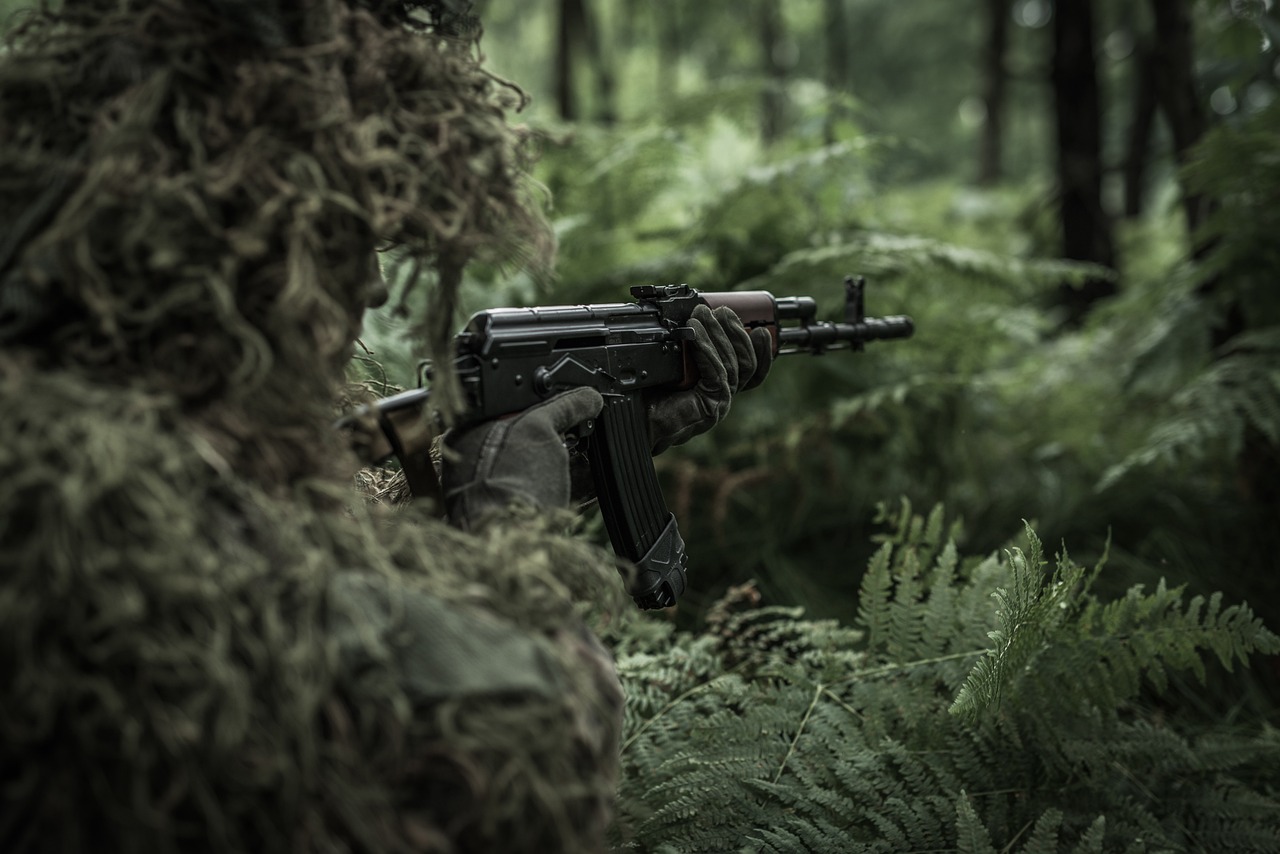
Technological Integration
This article explores the anticipated obstacles and considerations in adopting advanced military technologies, focusing on the implications for strategy, ethics, and operational effectiveness.
Integrating new technologies into existing military frameworks is not just a matter of plugging in the latest gadget and calling it a day. It’s akin to trying to fit a square peg into a round hole—there are significant challenges that come with this endeavor. One of the primary hurdles is the issue of compatibility. Many advanced technologies are designed with specific systems in mind, and when you introduce them into a legacy system, you can run into a host of problems. Just think about how frustrating it can be when your new smartphone can't connect to your old Bluetooth speaker. The military faces similar challenges, but the stakes are much higher.
Moreover, the need for extensive training cannot be overstated. Imagine a soldier who has been trained to operate a tank for years suddenly being handed a drone controller. Without proper training, the effectiveness of that technology can be severely compromised. This means that military organizations must invest not only in the technology itself but also in comprehensive training programs that ensure personnel can utilize these advancements effectively. The cost of training can be substantial, but it’s a necessary investment for operational success.
Another aspect of technological integration is the rapid pace of innovation. Technologies are evolving so quickly that what is cutting-edge today may be outdated tomorrow. This creates a dynamic environment where military organizations must constantly adapt. It's like trying to hit a moving target; if you're not quick on your feet, you might miss the opportunity to leverage a game-changing tool. In this context, staying ahead of the curve becomes a strategic imperative.
To further illustrate the complexities involved, let's consider a few key areas that require attention during the integration process:
| Key Areas | Challenges |
|---|---|
| Compatibility | Ensuring new tech works seamlessly with existing systems. |
| Training | Providing adequate training for personnel to adapt to new technologies. |
| Innovation Pace | Keeping up with rapid advancements to avoid obsolescence. |
In conclusion, the integration of new technologies into military operations is a multifaceted challenge that requires careful planning and execution. It’s not just about having the latest tools at your disposal; it’s about ensuring that those tools enhance operational effectiveness without compromising safety or efficiency. As military organizations face these challenges head-on, they must remain committed to investing in both technology and the people who will use it. The future of military effectiveness hinges on this delicate balance.
- What are the main challenges in technological integration? The main challenges include compatibility with existing systems, the need for extensive training, and keeping up with the rapid pace of technological advancements.
- Why is training important in military technology integration? Proper training ensures that personnel can effectively utilize new technologies, maximizing operational efficiency and safety.
- How does rapid innovation affect military technology? Rapid innovation can lead to obsolescence, making it essential for military organizations to stay updated and adapt to new technologies quickly.

Cybersecurity Threats
As military technology continues to evolve at a breathtaking pace, so do the that accompany it. Imagine a battlefield where not only physical weapons are in play but also invisible digital attacks targeting critical military infrastructure. The shift towards advanced systems like drones, AI-driven analytics, and interconnected networks has made military operations more efficient, but it has also opened the door to a new realm of vulnerabilities. These vulnerabilities can lead to catastrophic consequences if sensitive information and operational systems fall into the wrong hands.
One of the most pressing challenges in this domain is the sheer sophistication of cyberattacks. Hackers are constantly developing new methods to infiltrate military networks, making it imperative for defense organizations to stay one step ahead. In fact, recent studies have shown that over 60% of military organizations have reported at least one cyber incident in the past year. This statistic is alarming and highlights the necessity for robust cybersecurity measures. The potential for data breaches, ransomware attacks, and supply chain vulnerabilities means that the stakes have never been higher.
Moreover, the reliance on technology means that even a minor breach can have far-reaching implications. For instance, if an enemy were to exploit a vulnerability in a military drone's software, they could potentially take control of it, turning a valuable asset against its own forces. This scenario isn’t just a plot from a science fiction movie; it's a reality that military strategists must consider. Therefore, developing a comprehensive cybersecurity strategy is not just an option; it's a necessity for maintaining operational integrity and ensuring national security.
To tackle these challenges, military organizations are increasingly investing in advanced cybersecurity technologies and training personnel to recognize and respond to threats. The implementation of artificial intelligence in cybersecurity is one such advancement. AI can analyze vast amounts of data to identify unusual patterns that may indicate a cyberattack, allowing for quicker response times. However, this also introduces new challenges, such as the need for constant updates and the potential for AI systems to be manipulated by adversaries.
In addition to technological solutions, fostering a culture of cybersecurity awareness among military personnel is crucial. Regular training sessions, simulations, and workshops can help personnel understand the importance of cybersecurity and how to protect sensitive data. It’s not just about having the right tools; it's about cultivating a mindset that prioritizes security. This human element is often the weakest link in the cybersecurity chain, and addressing it can significantly bolster defenses.
Lastly, the global nature of military operations means that cybersecurity must be a collaborative effort. Sharing intelligence about emerging threats and vulnerabilities among allied nations can create a more resilient defense against cyberattacks. The importance of establishing interoperability in cybersecurity protocols cannot be overstated. By working together, nations can develop standardized practices that enhance collective security and protect against shared threats.
- What are the main cybersecurity threats facing military organizations?
The main threats include data breaches, ransomware attacks, and supply chain vulnerabilities, all of which can compromise sensitive military operations.
- How can military organizations improve their cybersecurity?
By investing in advanced technologies, conducting regular training for personnel, and fostering a culture of cybersecurity awareness.
- Why is collaboration important in military cybersecurity?
Collaboration allows for the sharing of intelligence and best practices, creating a more resilient defense against cyber threats.
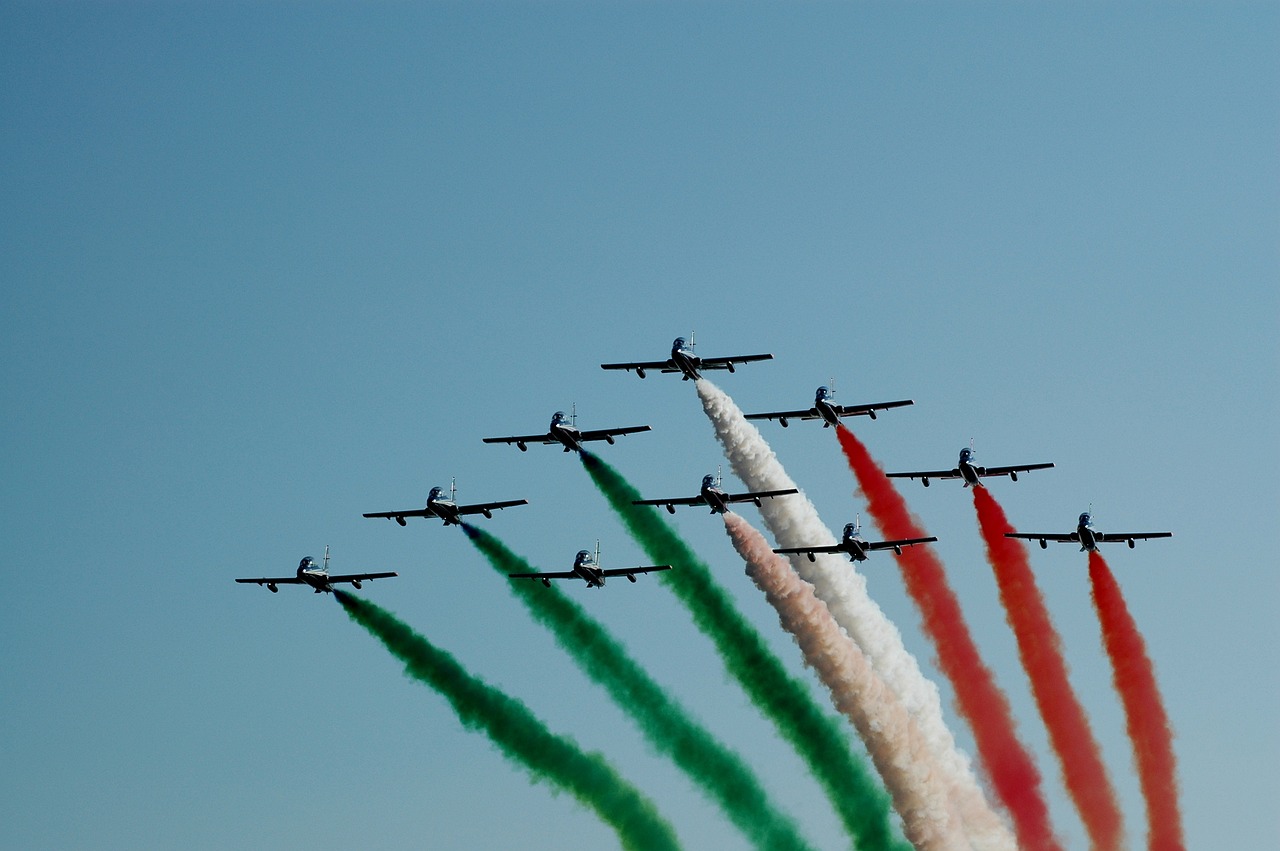
Ethical Considerations
This article explores the anticipated obstacles and considerations in adopting advanced military technologies, focusing on the implications for strategy, ethics, and operational effectiveness.
Integrating new technologies into existing military frameworks presents significant challenges, including compatibility issues and the need for extensive training to ensure personnel can effectively utilize these advancements.
As military technology evolves, so do the cybersecurity threats that accompany it. Protecting sensitive information and systems from cyberattacks is crucial for maintaining operational integrity and national security.
The rapid advancement of military technology raises a plethora of ethical questions that society must grapple with. One of the most pressing issues involves the use of autonomous weapons. These systems, capable of making life-and-death decisions without human intervention, challenge our traditional views of accountability and morality. Can we trust machines to make such critical choices? What happens when an autonomous drone misidentifies a target? The potential for catastrophic errors looms large, and addressing these concerns is vital for responsible implementation and adherence to international laws.
Moreover, the ethical implications extend beyond just the weapons themselves. The decision-making processes that govern their deployment are equally significant. As military strategies become increasingly reliant on algorithms and artificial intelligence, we must ask ourselves: are we sacrificing human judgment for efficiency? The danger here is twofold. First, it risks dehumanizing warfare, reducing individuals to mere data points in a complex algorithm. Second, it opens the door to manipulation and misuse of these technologies, leading to potential violations of human rights.
To navigate these ethical waters, military organizations must engage in an ongoing dialogue with ethicists, technologists, and the public. This conversation should focus on establishing clear guidelines for the development and use of military technologies. Here are some key considerations:
- Transparency: Military operations involving new technologies should be transparent to foster trust and accountability.
- Human Oversight: Ensuring that humans remain in the decision-making loop is crucial to prevent unintended consequences.
- Adherence to International Law: Military technologies must comply with existing international laws to protect civilians and maintain ethical standards.
In summary, the ethical considerations surrounding military technology are complex and multifaceted. As we stand on the brink of a technological revolution in warfare, it is imperative that we approach these challenges with caution and a strong moral compass. The decisions we make today will shape the future of military engagement and its impact on humanity.
Funding for military technology development is often limited by budget constraints. Balancing the need for innovation with fiscal responsibility is a persistent challenge for defense organizations worldwide.
The complexity of modern supply chains can expose military technology projects to vulnerabilities. Ensuring resilience and reliability in procurement processes is essential for successful implementation.
Achieving interoperability among different military branches and allied forces is crucial for effective collaboration. This challenge requires standardization and cooperation in technology development and usage.
Effective implementation of new technologies necessitates comprehensive training programs. Adapting military personnel to rapidly changing technological landscapes is essential for maximizing operational efficiency.
Public perception of military technology, particularly regarding privacy and ethical implications, can influence funding and policy decisions. Building trust with the public is an ongoing challenge for military organizations.
The deployment of advanced military technologies often has environmental consequences. Addressing sustainability and minimizing ecological damage is becoming increasingly important in military planning and operations.
- What are autonomous weapons? Autonomous weapons are systems capable of selecting and engaging targets without human intervention.
- How can military organizations ensure ethical use of technology? By establishing clear guidelines and maintaining human oversight in decision-making processes.
- What role does public perception play in military technology? Public perception can significantly influence funding and policy decisions regarding military technology development.

Budget Constraints
When it comes to military technology, one of the most pressing challenges that defense organizations face is the issue of . Imagine trying to build a state-of-the-art fighter jet with a budget that barely covers the cost of a family sedan. This scenario is not far from reality for many military branches around the world. The need for advanced technologies is ever-growing, yet the funds available to develop and implement these innovations often fall short. This creates a paradox where the military must balance cutting-edge advancements with fiscal responsibility.
Funding for military technology development typically comes from government budgets, which are subject to political debates, economic conditions, and competing priorities. As a result, defense organizations often find themselves in a tug-of-war, needing to justify expenses for new technologies while also addressing immediate operational needs. This situation can lead to suboptimal investment decisions, where essential projects are delayed or downsized, ultimately affecting national security.
Moreover, the rapid pace of technological advancement means that what was once considered state-of-the-art can quickly become outdated. For instance, a military branch may invest heavily in a new drone system, only to find that a more advanced version is already in development by a rival nation. This constant race for innovation can create pressure to allocate funds quickly, often at the expense of thorough research and development.
To navigate these budget constraints effectively, military organizations need to adopt a strategic approach to funding. This can include:
- Prioritizing Projects: Focusing on technologies that align closely with strategic objectives and have the potential for the greatest impact.
- Public-Private Partnerships: Collaborating with private sector companies can provide additional funding sources and expertise, allowing for more innovative solutions.
- Long-Term Planning: Developing a comprehensive roadmap for technology implementation that considers future needs and potential funding sources.
Additionally, international collaboration can help mitigate budget constraints. By pooling resources with allied nations, military organizations can share the financial burden of developing advanced technologies. This not only enhances capabilities but also strengthens alliances, creating a more unified defense posture.
In conclusion, while the challenges posed by budget constraints in military technology development are significant, they are not insurmountable. By adopting strategic planning, prioritizing investments, and fostering collaboration, military organizations can navigate these financial hurdles and continue to advance their technological capabilities in an increasingly complex global landscape.
- What are the main factors affecting military technology budgets? Budget allocations are influenced by political decisions, economic conditions, and the need to address immediate operational demands.
- How can military organizations overcome budget constraints? By prioritizing projects, engaging in public-private partnerships, and fostering international collaboration.
- Why is rapid technological advancement a challenge for military budgets? Technologies can become outdated quickly, necessitating continuous funding for new developments.

Supply Chain Vulnerabilities
In today’s rapidly evolving military landscape, pose a significant threat to the successful implementation of advanced military technologies. The complexity of modern supply chains, which often span multiple countries and involve numerous stakeholders, can lead to unforeseen disruptions that jeopardize military readiness and operational effectiveness. Just think of it as a chain where even one weak link can cause the entire system to fail. This vulnerability is not merely about logistical hiccups; it can have serious implications for national security.
One of the most pressing issues is the reliance on global suppliers for critical components. As military organizations increasingly depend on international partners for technology and materials, they expose themselves to risks such as political instability, trade disputes, and even natural disasters. For example, a sudden embargo on certain materials can halt production lines, leaving military forces without essential equipment. This situation can be likened to a game of Jenga—remove one crucial block, and the whole structure could come crashing down.
Moreover, the integration of cutting-edge technologies like artificial intelligence and advanced robotics into military operations adds another layer of complexity. These systems often require specialized components that may not be readily available in-house. Consequently, military organizations must navigate a labyrinth of suppliers, each with their own vulnerabilities. A single point of failure in this intricate web can lead to cascading effects that disrupt operations. To illustrate, consider the following table that outlines some common vulnerabilities in military supply chains:
| Vulnerability | Description | Potential Impact |
|---|---|---|
| Political Instability | Changes in government or policy in supplier countries. | Disruption of supply lines, increased costs. |
| Natural Disasters | Earthquakes, floods, or other disasters affecting production. | Production delays, equipment damage. |
| Cyber Attacks | Hacking of supply chain management systems. | Data breaches, operational disruptions. |
| Quality Control Issues | Inconsistent quality from suppliers. | Failures in critical systems, increased maintenance costs. |
To mitigate these vulnerabilities, military organizations must adopt a multifaceted approach. This includes diversifying their supplier base to reduce dependency on any single source, investing in cybersecurity measures to protect sensitive supply chain data, and implementing robust risk management strategies. Moreover, fostering close relationships with suppliers can enhance communication and collaboration, enabling faster responses to potential disruptions.
Additionally, military leaders need to prioritize resilience within their supply chains. This means not just preparing for known risks but also developing the agility to adapt to unexpected challenges. For instance, creating contingency plans that outline alternative sourcing options can help ensure continuity in operations, even when faced with unforeseen obstacles.
Ultimately, addressing supply chain vulnerabilities is not just about maintaining operational efficiency; it is about safeguarding national security. As military technology continues to advance, the stakes are higher than ever. A failure in the supply chain can lead to delays in deploying crucial systems, which could have dire consequences in times of conflict. Therefore, recognizing and addressing these vulnerabilities is essential for the future of military operations.
- What are supply chain vulnerabilities in military technology? Supply chain vulnerabilities refer to the risks and weaknesses within the supply chain that can disrupt the availability and effectiveness of military technologies.
- How can military organizations mitigate these vulnerabilities? By diversifying suppliers, investing in cybersecurity, and developing robust risk management strategies.
- Why is it important to address supply chain vulnerabilities? Addressing these vulnerabilities is crucial for maintaining operational readiness and safeguarding national security in an increasingly complex military environment.

Interoperability Issues
In the complex landscape of modern military operations, interoperability is not just a buzzword; it’s a critical requirement. Imagine a scenario where different branches of the military, or even allied forces, are unable to communicate effectively due to incompatible systems. This is not just a logistical nightmare; it can lead to catastrophic failures in mission execution. The integration of advanced military technologies has brought about a plethora of tools and systems, but ensuring these diverse elements work together seamlessly is a daunting challenge.
One of the primary hurdles in achieving interoperability stems from the diverse technological ecosystems that each military branch operates within. For instance, the Army, Navy, Air Force, and Marines each have their own legacy systems, protocols, and operational procedures. When new technologies are introduced, they often come with their own set of standards, which may not align with existing systems. This creates a situation where the potential benefits of advanced technologies are undermined by the inability to share crucial data and coordinate actions effectively.
Moreover, the issue of standardization cannot be overlooked. Without a common framework, the development and implementation of military technologies can become fragmented. This is particularly evident in joint operations where multiple forces must collaborate. A lack of standardization can lead to confusion on the battlefield, where every second counts. To mitigate these risks, military organizations must prioritize the establishment of interoperability standards that can be universally applied across different branches and allied nations.
Furthermore, the rapid pace of technological advancement means that what is cutting-edge today may be outdated tomorrow. This constant evolution requires not just a commitment to interoperability but also a willingness to adapt and evolve. Training programs must be designed not only to teach personnel how to use new technologies but also to understand how these systems fit into the larger operational picture. This is where comprehensive training becomes crucial, as it ensures that all personnel are on the same page, equipped with the knowledge to leverage new tools effectively.
To illustrate the importance of interoperability, consider the following table that summarizes key factors affecting interoperability in military operations:
| Factor | Description |
|---|---|
| Technological Compatibility | Ensuring that new technologies can function alongside existing systems without issues. |
| Standardization | Establishing common protocols and systems that can be used across different military branches. |
| Training and Education | Providing comprehensive training to personnel on new technologies and their applications. |
| Data Sharing | Facilitating effective communication and data exchange between different military units. |
In conclusion, addressing interoperability issues is not just a technical challenge; it’s a matter of operational effectiveness and mission success. The stakes are high, and as military technology continues to evolve, the ability to work together seamlessly will determine the outcome of future conflicts. Therefore, investing in interoperability solutions is essential for maintaining a competitive edge on the battlefield.
- What is interoperability in military terms? Interoperability refers to the ability of different military branches and allied forces to operate together effectively, sharing information and resources seamlessly.
- Why is interoperability important? It is crucial for ensuring coordinated operations, enhancing mission success, and reducing the risk of failures in joint missions.
- What are the main challenges to achieving interoperability? Key challenges include technological compatibility, lack of standardization, and the need for comprehensive training programs.
- How can military organizations improve interoperability? By establishing common standards, investing in training, and fostering collaboration between different branches and allies.
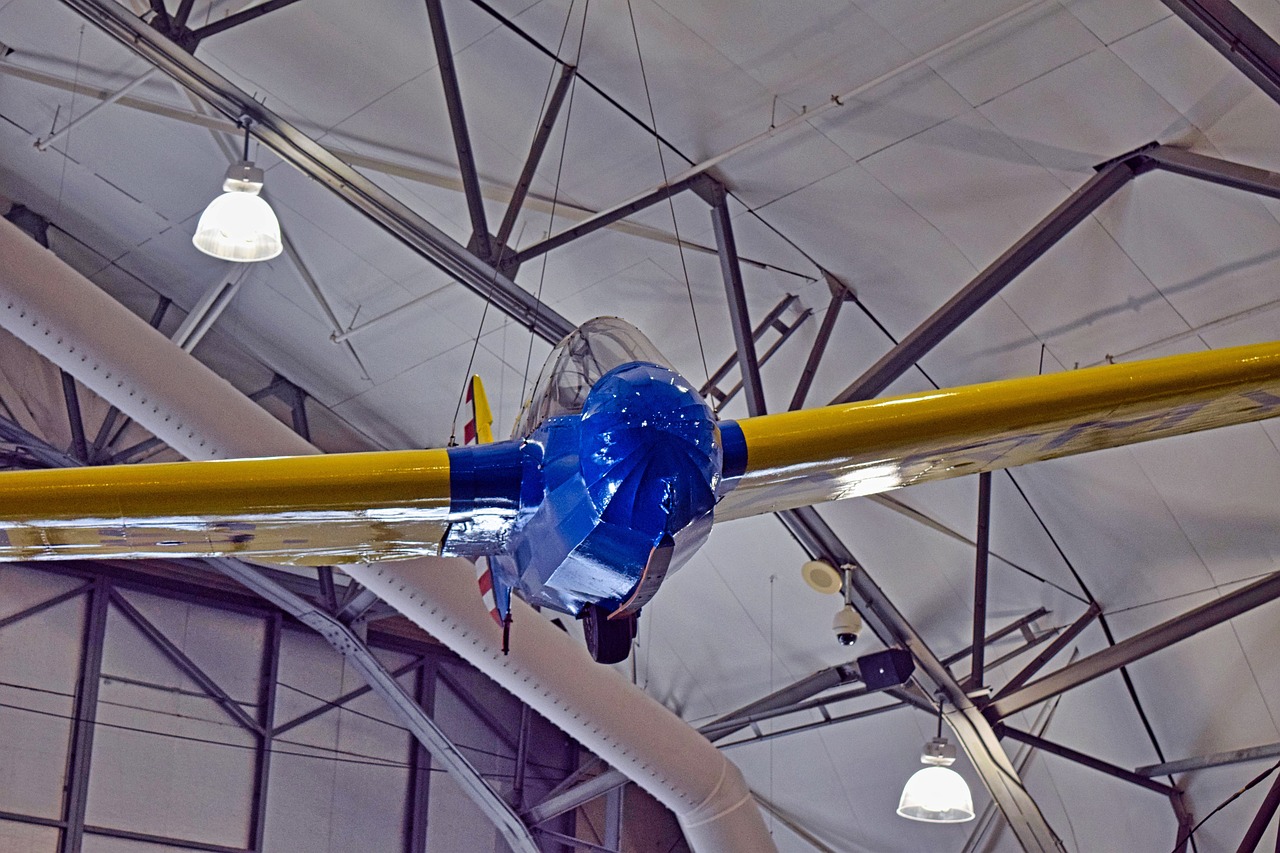
Training and Adaptation
In the rapidly evolving landscape of military technology, are not just beneficial; they are absolutely essential. The introduction of sophisticated systems—be it unmanned aerial vehicles (UAVs), advanced communication tools, or cutting-edge weaponry—demands that military personnel are not only familiar with these technologies but also adept at using them in high-pressure scenarios. Imagine trying to drive a car equipped with the latest navigation system without ever having learned how to operate it. The same principle applies to military tech; without proper training, even the most advanced equipment can become a liability.
One of the primary challenges in this area is the speed of technological advancement. The military landscape is changing faster than ever, and with each new innovation comes a steep learning curve. Training programs must evolve in tandem with technology, which means that military organizations need to be proactive rather than reactive. This involves not only teaching personnel how to use new tools but also fostering a culture of continuous learning. For instance, the integration of virtual reality (VR) simulations can provide a safe and controlled environment for soldiers to practice and hone their skills before facing real-world situations.
Furthermore, the adaptability of military personnel is crucial. As technology shifts, the ability to quickly learn and adjust to new systems can mean the difference between mission success and failure. This adaptability can be enhanced through:
- Hands-on Training: Practical experience is invaluable. Soldiers should engage with new technologies in realistic settings to build confidence and competence.
- Peer Learning: Encouraging collaboration among soldiers can facilitate knowledge sharing, where experienced personnel can mentor those less familiar with advanced technologies.
- Feedback Mechanisms: Implementing systems for soldiers to provide feedback on training programs can help refine and improve the learning process.
Moreover, the importance of cross-training cannot be overstated. By equipping personnel with skills across various technologies, the military can ensure that teams are versatile and capable of adapting to unforeseen challenges. This is akin to a football team where every player knows multiple positions; it increases the team's overall effectiveness and resilience during a game.
In summary, the successful implementation of new military technologies hinges on robust training and a commitment to ongoing adaptation. By prioritizing these elements, military organizations can maximize operational efficiency and ensure that their personnel are prepared to meet the challenges of modern warfare head-on. As the saying goes, "Failing to prepare is preparing to fail," and in the realm of military technology, preparation is everything.
- What types of training are most effective for military personnel?
Hands-on training, simulations, and peer learning are among the most effective methods for equipping military personnel with the skills they need. - How can military organizations ensure continuous learning?
By fostering a culture of adaptability and providing regular training updates, military organizations can keep personnel informed about the latest technological advancements. - Why is cross-training important in the military?
Cross-training allows personnel to be versatile and adaptable, enabling them to handle various roles and responsibilities as needed, thus enhancing overall operational effectiveness.
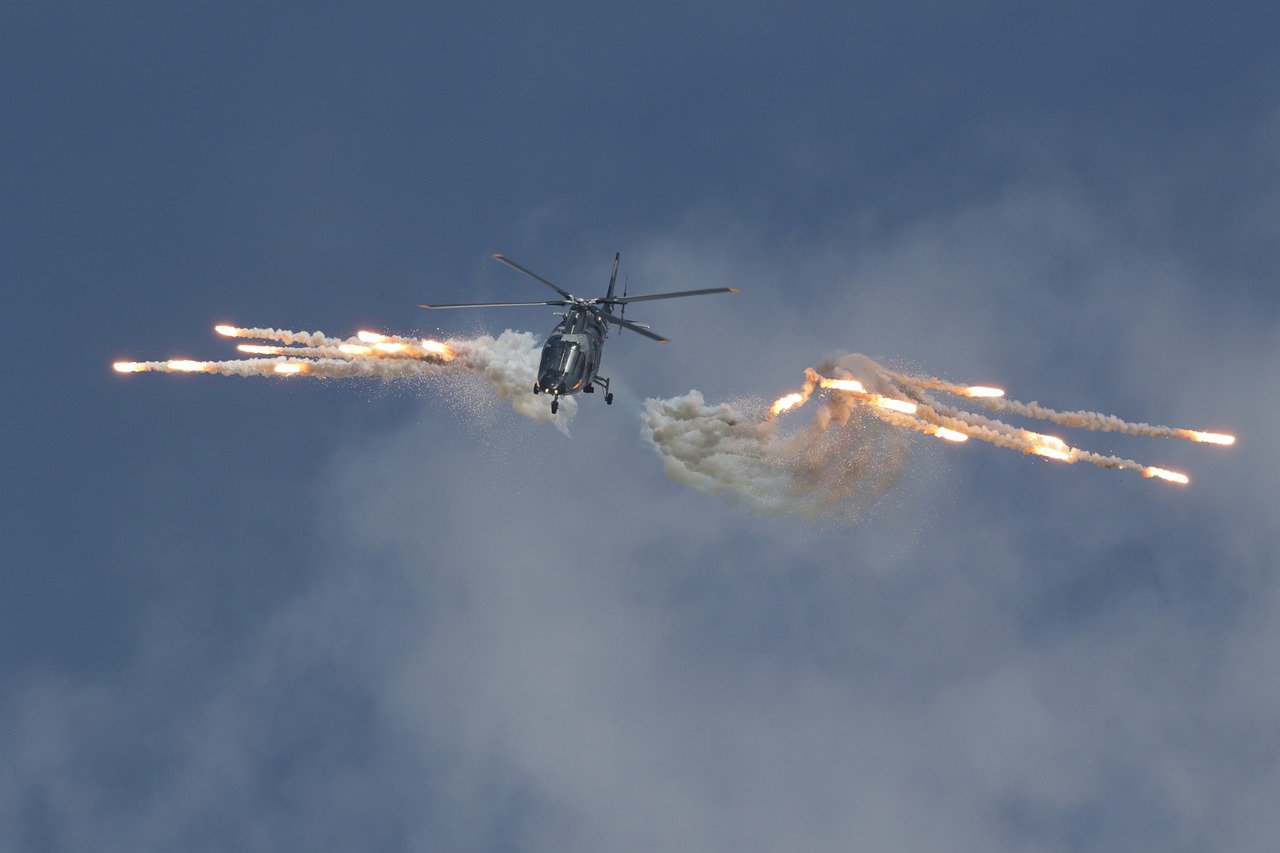
Public Perception and Trust
The landscape of military technology is not just shaped by innovation and strategic objectives; it is also profoundly influenced by public perception and the level of trust that citizens place in their military institutions. As advanced technologies become more integrated into military operations, the public's attitude towards these innovations can significantly impact funding, policy decisions, and even the overall effectiveness of military strategies. Have you ever wondered how much influence public sentiment has on military advancements? The answer is more than you might think.
One of the most pressing concerns for military organizations is the ethical implications of technologies such as autonomous weapons and surveillance systems. As these technologies become more prevalent, the question arises: are we sacrificing our values for the sake of security? A significant portion of the public may feel uneasy about the potential for misuse or the erosion of civil liberties. This skepticism can lead to a demand for transparency and accountability from military leaders, which is crucial for maintaining public trust.
Moreover, the rapid pace of technological advancement often leaves the public feeling overwhelmed and confused. To bridge this gap, military organizations must engage in proactive communication strategies to educate the public about the benefits and risks associated with new technologies. For instance, when introducing a new drone surveillance system, military leaders could conduct community forums or utilize social media platforms to explain how these technologies enhance national security while also addressing concerns about privacy invasion.
Another aspect to consider is the role of media in shaping public perception. News outlets often sensationalize military technology stories, which can lead to fear and misunderstanding. This is where military organizations need to step up their game. By fostering a relationship with the media and providing accurate, clear information, they can help to counteract misinformation and build a more informed public. In doing so, they not only enhance public trust but also create a more supportive environment for future technological implementations.
To further illustrate the importance of public perception, consider the following table that outlines the key factors influencing trust in military technology:
| Factor | Description |
|---|---|
| Transparency | Open communication about technologies and their implications. |
| Ethical Standards | Commitment to ethical considerations in technology deployment. |
| Public Engagement | Involvement of citizens in discussions about military technologies. |
| Media Relations | Building strong relationships with media to ensure accurate reporting. |
Ultimately, the relationship between military organizations and the public is a two-way street. While military leaders must strive to build trust through transparency and ethical practices, the public also has a role to play in understanding the complexities of military technology. By fostering an open dialogue, both parties can work towards a common goal: ensuring that military advancements serve to protect and enhance the safety of society as a whole.
- What role does public perception play in military technology? Public perception can significantly influence funding, policy decisions, and the overall effectiveness of military strategies.
- How can military organizations improve trust with the public? By engaging in transparent communication, addressing ethical concerns, and fostering media relations.
- Why is ethical consideration important in military technology? Ethical considerations help ensure that technologies are used responsibly and do not infringe on civil liberties.
- How can the public stay informed about military technologies? Through community forums, social media, and reliable news sources that provide accurate information.

Environmental Impact
The deployment of advanced military technologies has become a double-edged sword, offering enhanced capabilities while simultaneously posing significant environmental challenges. As nations invest heavily in cutting-edge equipment and systems, the ecological footprint of military operations cannot be overlooked. From the production of high-tech weaponry to the logistics of transporting these assets, the environmental implications are profound and far-reaching.
One of the most pressing concerns is the pollution generated by military activities. The manufacturing processes for advanced technologies often involve hazardous materials that can lead to soil and water contamination. Additionally, the operation of military vehicles and aircraft contributes to greenhouse gas emissions, exacerbating climate change. For instance, the emissions from military aircraft can be significant, with a single fighter jet producing as much carbon dioxide as several hundred cars in a comparable timeframe.
Moreover, the testing and training exercises conducted by military forces can have devastating effects on local ecosystems. These activities often disrupt wildlife habitats, leading to a decline in biodiversity. The noise pollution generated by military exercises can also adversely affect animal behavior, particularly in sensitive areas. As countries push for more advanced technologies, the need for extensive testing becomes inevitable, raising the question: how can we balance military readiness with environmental stewardship?
To address these challenges, military organizations are increasingly looking towards sustainable practices. This includes investing in green technologies and adopting practices that reduce their environmental impact. For example, some militaries are exploring the use of renewable energy sources, such as solar and wind power, to operate their bases and equipment. This shift not only minimizes carbon emissions but also enhances energy security, reducing reliance on fossil fuels.
Furthermore, international cooperation plays a crucial role in mitigating the environmental impact of military technology. By sharing best practices and technologies, nations can work together to develop solutions that protect the environment while maintaining operational effectiveness. This collaboration can take the form of joint training exercises focused on sustainability or shared research initiatives aimed at reducing the ecological footprint of military operations.
As we look to the future, it is essential for military leaders and policymakers to prioritize environmental considerations in their strategic planning. The integration of sustainability into military operations is not merely a trend; it is a necessity. By embracing innovative technologies and practices, the military can not only enhance its capabilities but also ensure that it is a responsible steward of the planet.
- What are the main environmental impacts of military technologies? The primary impacts include pollution from manufacturing processes, greenhouse gas emissions from military operations, and disruption of local ecosystems during training exercises.
- How can militaries reduce their ecological footprint? By investing in green technologies, utilizing renewable energy sources, and adopting sustainable practices in operations and logistics.
- Is international cooperation important for environmental sustainability in military operations? Yes, sharing best practices and technologies among nations can lead to more effective solutions that minimize environmental impact while ensuring operational readiness.
- What role does public perception play in military environmental practices? Public awareness and concern about environmental issues can influence military funding and policy decisions, making it crucial for military organizations to build trust with the community.
Frequently Asked Questions
- What are the main challenges in integrating new military technologies?
Integrating new military technologies into existing frameworks faces several hurdles. These include compatibility issues with current systems and the necessity for extensive training programs to ensure personnel can effectively operate the new advancements. The transition can be likened to trying to fit a square peg into a round hole; it requires careful planning and adaptation.
- How do cybersecurity threats impact military technology?
As military technology becomes more advanced, the associated cybersecurity threats also escalate. Protecting sensitive information and systems from cyberattacks is paramount to maintaining operational integrity and national security. Imagine a fortress; if the walls are weak, the entire structure is at risk of collapse.
- What ethical considerations are there regarding autonomous weapons?
The rapid development of military technologies raises significant ethical questions, especially concerning autonomous weapons and their decision-making processes. It's crucial to address these concerns to ensure responsible implementation and compliance with international laws. Think of it as navigating a moral minefield; one wrong step can lead to serious consequences.
- How do budget constraints affect military technology development?
Funding limitations often challenge military technology development. Balancing the need for innovation with fiscal responsibility is a constant struggle for defense organizations worldwide. It's similar to trying to build a high-tech fortress on a shoestring budget; compromises must be made.
- What vulnerabilities exist in military supply chains?
The complexity of modern supply chains can expose military technology projects to vulnerabilities. Ensuring resilience and reliability in procurement processes is essential for successful implementation. Imagine a chain; if one link is weak, the entire structure can fail.
- Why is interoperability important in military operations?
Achieving interoperability among different military branches and allied forces is crucial for effective collaboration. This challenge requires standardization and cooperation in technology development and usage. It's like trying to coordinate a team sport; everyone needs to be on the same page to succeed.
- What role does training play in technology implementation?
Effective implementation of new technologies necessitates comprehensive training programs. Adapting military personnel to rapidly changing technological landscapes is essential for maximizing operational efficiency. Think of it as teaching a new dance; without practice, the moves can easily become chaotic.
- How does public perception influence military technology?
Public perception of military technology, particularly regarding privacy and ethical implications, can significantly influence funding and policy decisions. Building trust with the public is an ongoing challenge for military organizations, much like cultivating a garden; it requires patience and care to flourish.
- What are the environmental impacts of advanced military technologies?
The deployment of advanced military technologies often has environmental consequences. Addressing sustainability and minimizing ecological damage is becoming increasingly important in military planning and operations. It's akin to balancing on a tightrope; one misstep can lead to a fall that impacts not just the military, but the planet as a whole.



